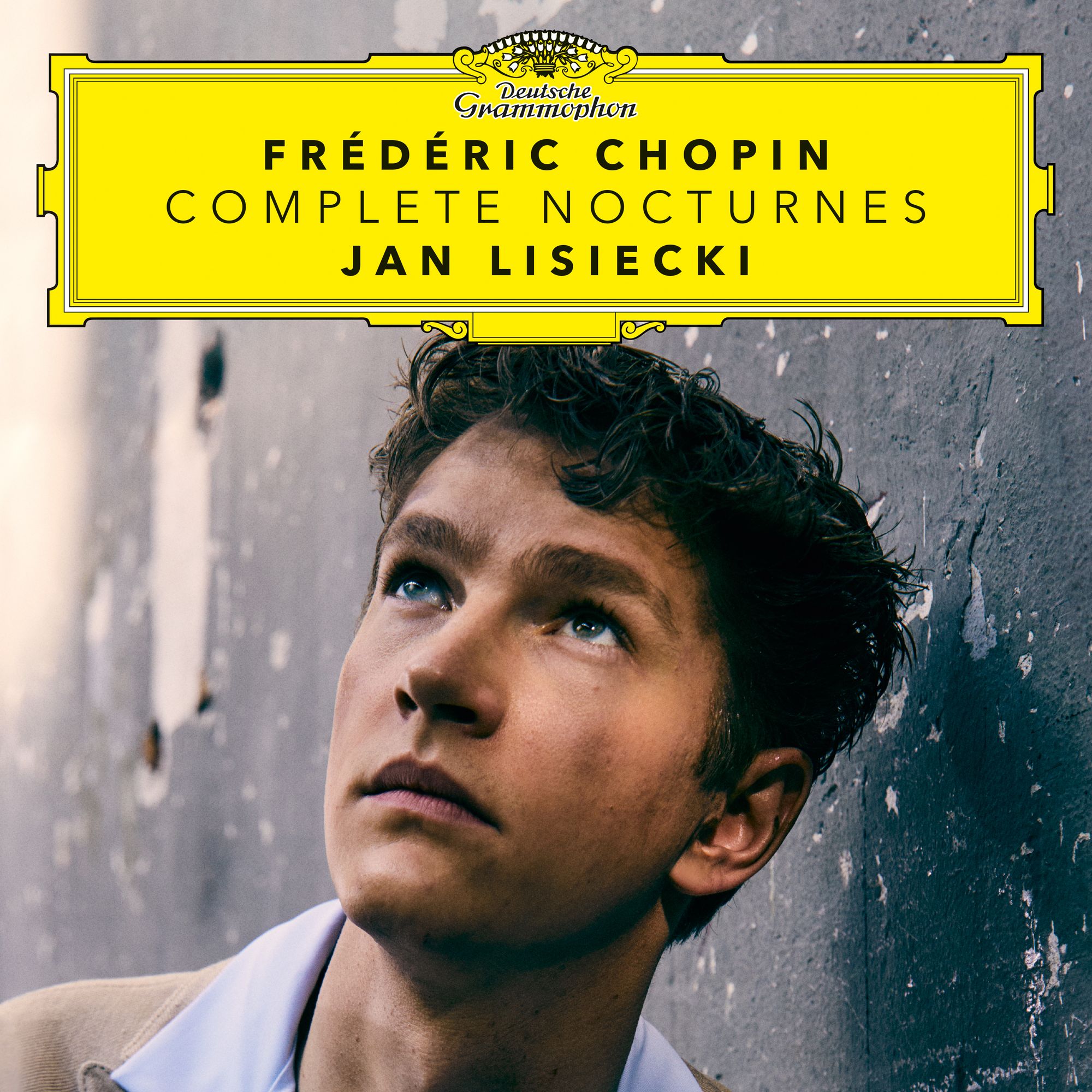Jan Lisiecki records Chopin Nocturnes for DG
A beautiful, brilliant set of Chopin performances of the very highest order

The Canadian pianist Jan Lisiecki has recorded all of Chopin's Nocturnes for Deitsche Grammophon, his eighth release for that label. Many, like myself from an earlier generation will cherish Daniel Barenboim's traversal of Chopin's string of nocturnal pearls, also on the Yellow label. The disc follows on from Works for Piano & Orchestra (2017) and Chopin: Études (2013),
Lisiecki plays with such sensitivity. The Nocturnes are a like a very personal diary for Chopin, song-like at basis and utterly glorious in conception.Lisiecki finds such nuance in these pieces: just listen to the very first, B flat minor, Op. 9/1:
From this performane, beautifully recorded, one can hear the core traits that thread their way through the set: beautiful tone, sining line, a perfect sense of flow.

These are refined performance, the filigree beautifully done, rubato impeccable. Recorded last year in Berlin's historic Meistersaal, the DG sound is perfect. Here's Lisiecki on the recording, and why he made it:
I’m the first to question why we should record something that has been recorded many times before. But music only lives through performance and is different every time we hear it, even when it’s a recording. I think there was something for me to say with this album. It reflects on the last year and my thoughts on that as well as on the escape and understanding that music gives us.
Lisiecki enables us to hear both the influence of opera (particularly Bellini in those long lines) and Polish folk music in these pieces. Rather neatly, teh Nocturnes span Chopin's enture career, so listening straight through enables one to track Chopin's develoipment as a omposer. The Nocturnes are close to Lisiecki's heart as it was through these pieces that he initially discovered Chopin.
A turning point came when his teacher asked Lisiecki to name the three elements of music. Melody and harmony instantly sprang to mind. But the third eluded him.
I thought about it and eventually said ‘line’. “Rhythm had completely escaped me! It was the least important thing for me when I was eleven or twelve. Since then, of course, I’ve come to appreciate just how vital it is: rhythm serves the melodic line.Chopinfar exceeded the boundaries of what his contemporaries considered possible on the piano, especially in terms of the singing line. Unlike the human voice, the piano can play the longest melody without the need to take a breath; like a great singer, the pianist has to shape phrases and give emotional light and shade to melodies. Chopin’smusic flows by itselfin a sense, but you need to feel instinctively where things are placed. It’s about striking the balance between allowing the music to flow naturally and knowing subconsciously where it should go.
Time for an interlude: the Nocturne, Op. 15/2 in F sharp minor, and just listen to the contrasts Lisiecki finds here:
Lisiecki ruminates on how the pandemic has affected his interpretations:
Because the pandemicbrought everything to a halt, I think I gained a fresh appreciation of time and work and a different understanding of my relationship with music. Being in the studio last October was a gift. I felt completely at ease and free from pressure. These were the most pleasurable and relaxed recording sessions I’ve known;they were perfect for the Nocturnes. I could spend time with each piece at my own pace and live with them all in a way that felt completely natural and organic. I was very privileged to have a fantastic piano and one of my favourite piano technicians–Daniel Brech, whomI adore. He understands me and the colours I want from the piano. That was immensely important. Stephan Flock, the producer,is someone with whom I also have a long relationship and who knows how to communicate what he feels with me. Having all those elements together was phenomenal.
There is indeed a pronounced intimacy to some of the recordings (the thrid of the Op. 15 set is remarkable from that standpoint).
Lisiecki presents the Op. 27 pair of Nocturnes as a perfectly contrasted du, the C hsarp minor (No. 1) a piece of contrasts of portentious octave recitatives against mysterious, velied melodiy, the second as an outpouring of melody, ever more decorated until that magnificent coda, with its spontaneous rhythms (but notated: groups of seven in the right hand against six in the left) and proto-Debussian harmonies. (We hear someting similar, but without the coda, in Op. 55/1 in F-Minor). Let's hear the two Nocturnes Op. 27 side-by-side to illustrate the point:
As we move through the sets of Nocturnes Opp. 32 and 37, one can hear increased sophistication in Chopin's writing; and in Lisiecki's response to the music, for that matter. His sense of scale is impeccable: he can project turmoil without transgressing the emotional boundaries of the form. One of the most deceptive Nocturnes is the G-Minor, Op. 37/1: on paper it looks easy, but getting the balances ofthe chords, the tempo and the mood right is incredibly difficult. Lisiecki nails it:
The second disc takes us from the pair of Nocturnes Op. 48 through to Op. 62 and the three posthumously published ones. With the Nocturne Op. 48/1 (C minor), Chopin takes us to whole new worlds. It's like a miniature tone-poem, and Lisiecki gives us one of the finest recorded accounts. Let's treat ourselves and hear Lisiecki first live and then studio:
When it comes to the final set with an opus number, Op. 62, we are contemporaneous with the mysterious Polonaise-Fantaisie.We enter the rarefied world of late Chopin, and how wonderfully Lisiecki light it up from within. Here's Op. 62/1 in B-Major:
Three poshumously published Nocturnes conclude a superb release. Perhaps it is the veiled darknes of the C-Minor that caught my atention the most;
A beautiful, brilliant set of Chopin performances of the very highest order.
